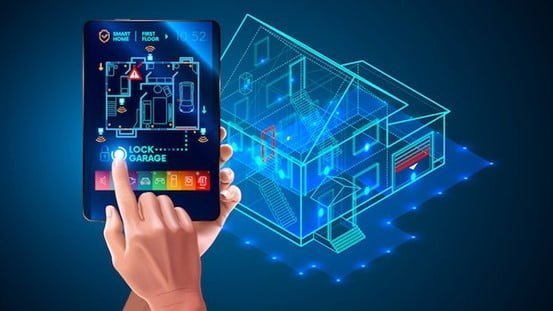Why Life is easier with a Smart Home
Smart homes are all the buzz now a days. Life is easier with a smart home, it is a fact. Whether it is allowing your home to do the monotonous tasks you don’t want to, or the ability to be more mindful of your life, smart homes are very great. Needless to mention that heating and electricity savings of up to 30% are possible with smart home solutions. As a DevOps engineer, I like when things are automated. In this article, I will be discussing on how smart homes can save you electricity.
How smart homes saves you electricity?
Your individual consumption pattern and sophisticated controls are critical levers for lowering electricity consumption. Smart home technologies can help with both. According to Fraunhofer Institute for Building Physics calculations, intelligent house control can save up to 40% on electricity expenditures. That is unquestionably the best case scenario. Many smart home companies claim annual savings of up to 30%. Those numbers seem to be a fair estimate.
Many heating systems are now programmable thanks to smart home technologies. If you are not at home at particular periods of the day, your radiator might be turned down automatically. Anyone who arrives home earlier than intended can easily access their smart home via an app while on the go. Because, for example, it is not necessary to leave the heater on even when no one is at home throughout the day. However, when ventilating, the heating does not have to be turned on. When a window is opened in a networked house, the heating is automatically turned off. Of course, the heating can be controlled manually as well if it is required.
When it comes to electricity conservation, the following rules apply: It is preferable to turn off the devices altogether rather than leave them in standby mode. Intelligent adapter plugs or wall buttons, for example, can be useful in this situation. Users can utilize an adaptor plug to turn any electrical item on or off fully, as well as evaluate usage to identify unknown power hogs. In the smart home app, the user can even see whether the devices that should be turned off are actually turned off while on the go – and can even turn them off remotely if necessary. Homeowners can also utilize a wall button to deactivate all non-essential electrical equipment with a single click when they leave their home.
Consumers can also save power by setting the home for some predetermined scenarios: during a leisurely reading hour on the sofa, you can turn on the reading light in the living room while dimming all other light sources in the room with the smart home’s app.
How do smart home technologies continue to manage electricity consumption?
A major future trend in the smart home may already be seen today: homeowners who generate their own electricity using a photovoltaic system on their roof. Small systems for generating local energy from wind power are also still in their infancy. Smart home technology is used so that the weather does not determine whether or not the user has enough electricity. In the future, intelligent building technology will ensure that unused electricity is either stored or utilised for devices whose power delivery can be delayed. The e-bike, for example, charges by moving the load, particularly at night, and the washing machine washes only when electricity is cheap. The intelligent house successfully controls the power sources, consumers, and storage so that homeowners uses as little electricity as possible
What can a smart house do for you?
Almost nothing is safe from automation in today’s smart house. Every little home appliance can be controlled intelligently with the click of a button. These smart home systems are much more efficient than humans and can save you a good amount of money at the end of a year.
Time management
The origins of the smart home can be traced back to switchable outlets that can be controlled by remote control or a built-in timer. Wi-Fi sockets may now be intelligently controlled wirelessly across the house using the control center. With various daily, weekly, and vacation programs. The latter simulate the presence of the residents in the evening by switching televisions or lamps on and off in different rhythms.
Lighting
After the outlets, the smart home is progressing to a full-fledged lighting control, which can now be managed remotely as well. Either directly through the power distribution box or through the use of remotely controllable lighting. These may be turned on and off, muted, and even hue changed to create different light settings based on your preferences.
Switching between groups
The so-called group switching of different consumers is also common: a single button press turns on or off the television, Blu-ray player, and associated hi-fi system all at once. Another option is theWireless socket, which monitors the power usage of connected devices and shuts down all devices if the standby mode is activated for an extended period of time. More convenience is provided by the use of the so-called “all-out switches.” When you leave your house, these ensure that all non-essential gadgets – the stove, the coffee machine, and the full room illumination – are turned off at the touch of a button. This even works when you’re out and about, so you don’t have to wonder if you truly turned off the oven.
Cooling and heating
The smart home not only controls all of the household’s electrical consumers, but it also monitors their climate. In the first phase, traditional panel or tubular radiators are outfitted with a smart heating control. It then adjusts the individual radiators to a predetermined temperature at the desired time: lovely and warm in the morning, a few degrees colder during the day, and more comfy in the evening till you go to sleep. The downside of these individual thermostats is that they have a restricted local effect. It makes more sense to put a central temperature sensor where the majority of people meet, such as at the dining or coffee table.
As a result, it is concerned with maintaining a consistent room temperature and manages the individual radiator thermostats through radio. In addition to traditional radiators, contemporary technologies regulate wall and underfloor heating and can even be linked to an existing Solar thermal system. You may also cool the living room with ventilation or air conditioning in the heat, as well as automate awnings and shutters.
In this article, I have shown why life is easier with a smart home. If you want to discuss smart home integration, let me know! I love that stuff.

Matthew J Fitzgerald is an experienced DevOps engineer, Company Founder, Author, and Programmer. He Founded Fitzgerald Tech Solutions and several other startups. He enjoys playing in his homelab, gardening, playing the drums, rooting for Chicago and Purdue sports, and hanging out with friends.

